|
|
|||
|
(Back to Preceding Week; on to Next Week) |
|
All text & photos © Hilton Pond Center SNOW, DUCKS & We flew back from our annual hummingbird expeditions to Costa Rica on 25 February 2009, got off the airplane in Charlotte NC, made it through customs, and immediately added sweatpants and a jacket to the shorts and T-shirt outfit we'd been wearing. It was COLD in Charlotte, especially compared to the balmy tropical weather to which we'd grown accustomed. We spent the next three days gradually acclimating to lower temperatures--and then the month of March arrived. March indeed came in like a lion, with drenching rains all night on 28 Feb-1 March. Because of this downpour and subsequent run-off from saturated soils, the level of Hilton Pond itself rose dramatically on the first day of March, reaching maximum (overflow) depth by late afternoon for the first time in more than two years.
All text & photos © Hilton Pond Center While the rains continued, an overnight drop in temperature caused wet precipitation to change over to sleet and eventually to snow. By the morning of 2 March at Hilton Pond Center we had about 3" of very wet white stuff--a far cry from Costa Rica and its hungry hummingbirds in the aloe and fresh papayas in the trees. The good news was that the sleet and snow continued to provide moisture that would saturate soil and help keep our small impoundment at full pond--a level indicated when a raft we use to check our Wood Duck boxes floats even with the pier (above). After almost losing Hilton Pond to several droughts in the past decade, we're happy for any precipitation we can get.
All text & photos © Hilton Pond Center As usual with March storms here in the Carolina Piedmont, the snow was very wet and very heavy--so much so it weighed down evergreens while barely covering the ground beneath. Perhaps hardest hit at Hilton Pond was a treasured old Camellia (above) whose broad green leaves were a perfect surface upon which wet snow could stick. The shrub's limbs were bent nearly to the ground so we knew when everything melted we'd be out with lopping shears and pruning scissors to minimize the inevitable damage. Our friends from the north laugh at us when we pay so much attention to such piddling amounts of snow, but the white stuff is so unusual here in the South it often does a disproportionate amount of damage to local vegetation.
All text & photos © Hilton Pond Center The snow at Hilton Pond Center disappeared, of course, almost as quickly as it came. Under sunny, blue skies (above) almost everything melted by late afternoon on 2 March but due to a hard freeze overnight schools and businesses were closed the next day for fear of dreaded "black ice." That, too, was gone in another 24 hours, so by 3 March things were back to normal and we could start getting caught up on all manner of things we weren't able to deal with from Costa Rica. One of those was to touch base with Donna and John Hauenstein, who we met 20 years ago when we taught biology to their enthusiastic, appreciative, high-achieving daughters Suzanne, Shana, and Julie. Donna e-mailed us in early December 2008 she and John had spotted a hummingbird at their feeders on the first of that month and the bird was starting to come regularly in nearby Rock Hill SC. With a wedding, wrist surgery, and Christmas holidays coming up we had to forego a banding visit until January, when we were stymied again by bad weather and then our trip to Costa Rica. One of the first things we did upon returning from the tropics in late February 2009 was contact the Hauensteins, who told us their hummer was still present. Thus, we laid plans to make the short 10-mile cross-county journey with our portable trap and banding tools on the morning of 7 March. We arrived before dawn--our preferred time to catch winter vagrant hummers as they make first feeder visits following a night of fasting. After hanging the trap and placing the feeder inside, we retired with the Hauensteins to their kitchen to see what would happen. It wasn't long before a feathery apparition appeared in the waning darkness and, in a minute or two, flew right into the trap. A quick flip of our remote trigger and the bird was snared.
All text & photos © Hilton Pond Center As we looked at the hummer through the wire mesh it seemed rather small, but the orange-metallic throat feathers and rust in the tail did confirm what the Hauensteins has suspected all along; they had been hosting a Rufous Hummingbird, Selasphorus rufus (above). The vast majority of this species--which breeds in southern Alaska, western Canada, and the northwestern U.S.--overwinters in Central Mexico, but over the past 20 years or so Rufous Hummingbirds have been reported in eastern states during winter with increasing regularity.
All text & photos © Hilton Pond Center We carefully removed the hummer from the trap, gently slid it into a paper tube, weighed it, placed a band on its leg, and made additional measurements to try to confirm its sex. If this bird had a full orange-red gorget and a rusty back and head we could have sexed it easily; only males look like that. Younger males, however, have incomplete gorgets and still have greenish backs and heads; in other words, they look a lot like females. At first, based on size and the amount of rusty color in various parts of its plumage we suspected this was a young male, but we have been fooled before. In our judgment various measurements we made were inconclusive. For example, the published wing chord range for Rufous Hummingbirds is 42.6-46.6mm for females and 38.1-42.5mm for males, while the Hauenstein's bird was a borderline 42.7mm. The culmen (upper edge of the top mandible) didn't help much either because females average 16.4-19mm and males 14-17mmm; the hummer-in-hand was 17.5mm, which we also would call a borderline measurement. None of the other measurements were conclusive, either, so we made a subjective call based upon the non-contiguous configuration of the iridescent feathers on the throat (above) and the nippled shape of several tail feathers (below)--both characteristics of female Rufous Hummingbirds.
All text & photos © Hilton Pond Center The clincher on sexing the bird came when we spread its tail and discovered the outer three feathers on each side were still "in quill", i.e., the bases were partly ensheathed and the feathers were still growing. These new feathers all had white tips and since they were new "adult" feathers the bird had to be a female; outer rectrices of young male Rufous Hummingbirds have white tips, but they are replaced by dark-tipped adult male feathers. Based on the amount of rust coloration on the bird's body plumage and tail, we felt pretty confident she was an older hummer--an after second year female that hatched prior to 2008.
All text & photos © Hilton Pond Center Ageing and sexing winter vagrant hummers is a little like a detective game and we enjoyed helping the Hauensteins work through the conundrum of their bird's details. After banding we took this winter vagrant Rufous Hummingbird outside where we photographed John taking pictures of Donna (above). We then released #Y14965, our 70th winter vagrant since 1991. (NOTE: After banding on 7 March, the Hauenstein's rufous returned to feed several times daily and was last seen on 30 March.) All text & photos © Hilton Pond Center
All text & photos © Hilton Pond Center Chief-of staff Don Winslow and Emily Cope (assistant director of Special Projects and National Affairs) of South Carolina's Department of Natural Resources were kind enough to come to Hilton Pond Center earlier in March for a meeting AND to bring along six much-needed Wood Duck boxes to replace those we had gotten from DNR and installed 'way back in the summer of 1982. Despite being made of rot-resistant Western White Cedar, those original boxes--which through the years have fledged in excess of 600 Wood Ducklings (below left)--were pretty much worn out and not likely to satisfy a discriminating Wood Duck hen or her drake.
Within a few days as least two local Wood Duck pairs were checking out the renovations and we're quite sure when we examine nestbox contents in early April we'll find lots of eggs therein. Historically, our local boxes have contained clutches of 10-20 eggs that took about 30 days to hatch.
All text & photos © Hilton Pond Center Two days after we finished hanging the Wood Duck boxes, we were pleased to look out at Hilton Pond and see a pair of Ring-necked Ducks skimming the surface, creating an almost abstract image (above). This pair certainly won't be using the new nest boxes for several reasons: They're not cavity nesters; they'll be departing any day now in migration; and they breed in New England and the North Central states. Nonetheless, it was nice to have these ring-necks around after we'd braved the early March snowfall, banded the Hauenstein's winter hummingbird, and gotten our Wood Duck boxes hung just in time for the 2009 egg-laying season. All text & photos © Hilton Pond Center
Comments or questions about this week's installment?
Thanks to the following fine folks for recent gifts in support of Hilton Pond Center for Piedmont Natural History and/or Operation RubyThroat: The Hummingbird Project. Your tax-deductible contributions allow us to continue writing, photographing, and sharing "This Week at Hilton Pond." (Please see Support if you'd like to make a gift of your own. You can also contribute by ordering an Operation RubyThroat T-shirt.) The new friends below--all members of the Alpha Niners Week One group that went with us to band hummingbirds in Costa Rica this year--made thoughtful donations after the trip via PayPal, Network for Good, or good ol' check-by-mail. We appreciated their work in the aloe fields and we are sincerely grateful for their continued generosity.
"This Week at Hilton Pond" is written & photographed You may wish to consult our Index of all nature topics covered since February 2000. You can also use our on-line Hilton Pond Search Engine at the bottom of this page. For a free, non-fattening, on-line subscription to |
|
Make direct donations on-line via
Network for Good: |
|
|
Use your PayPal account
to make direct donations: |
|
|
If you like to shop on-line, you please become a member of iGive, through which more than 750 on-line stores from Barnes & Noble to Lands' End will donate a percentage of your purchase price in support of Hilton Pond Center and Operation RubyThroat. For every new member who signs up and makes an on-line purchase iGive will donate an ADDITIONAL $5 to the Center. Please sign up by going to the iGive Web site; more than 200 members have signed up to help. It's a painless, important way for YOU to support our on-going work in conservation, education, and research. |
|
|
SPECIES BANDED THIS WEEK: * = New species for 2009 WEEKLY BANDING TOTAL 12 species 268 individuals YEARLY BANDING TOTAL (2009) 15 species 602 individuals 28-YEAR BANDING GRAND TOTAL (since 28 June 1982; since Mar 1982, during which time 170 species have been observed on orover the property) 124 species 52,484 individuals NOTABLE RECAPTURES THIS WEEK (with original banding date, sex, and current age) American Goldfinch (4) Carolina Chickadee (1) Brown-headed Nuthatch (1) Chipping Sparrow (2) House Finch (3) Purple Finch (3)
|
OTHER NATURE NOTES OF INTEREST --Our first Dark-eyed Junco of the season FINALLY showed up at the Center on 3 Mar. This is the first winter in 26 years we haven't had them from late fall onwards. On average we band 27 per year, with an all-time high of 74 back in 1991. --5 Mar turned out to be a pretty good day for banding around Hilton Pond: 61 new individuals trapped, plus recaptures of a couple of House Finches banded locally as youngsters in the 2008 breeding season. --A brown Purple Finch trapped on 13 Mar was the 7,500th of its species banded at Hilton Pond Center since 1982. --Three old birds recaptured this week are worth special mention: An after sixth year Chipping Sparrow banded in early spring 2004, and two male Purple Finches--an ancient 7th year one banded in Jan 2004, and an after 5th year one from Mar 2006.
|
|
|
|
(Back to Preceding Week; on to Next Week) Up to Top of Page Back to This Week at Hilton Pond Center Current Weather Conditions at Hilton Pond Center |
 You can also post questions for The Piedmont Naturalist |
Join the |
Search Engine for |
|
|
Dell Coupons

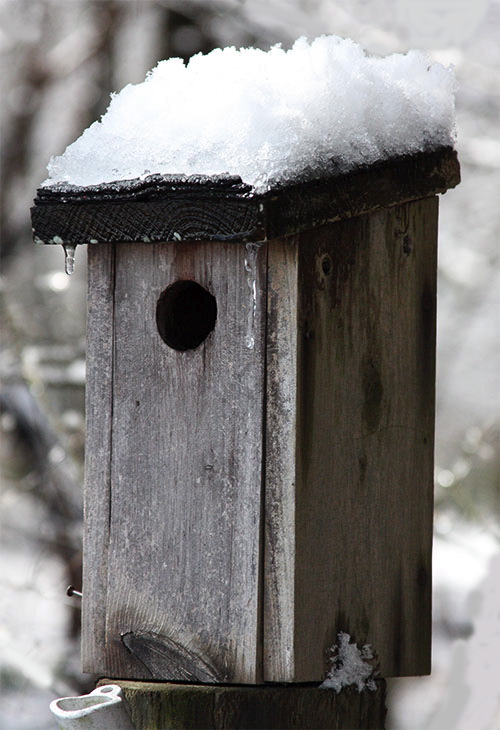
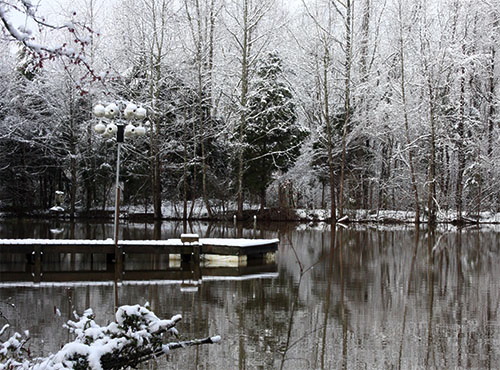
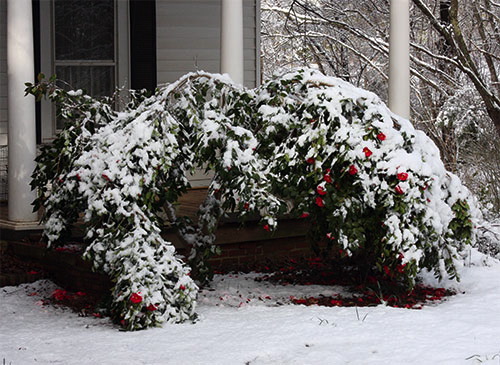
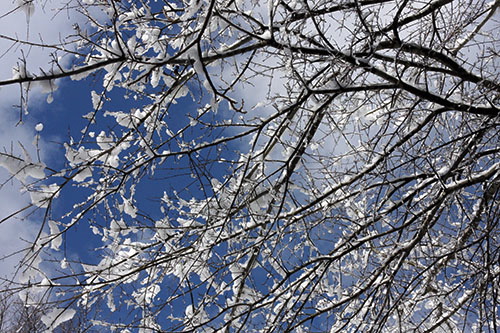



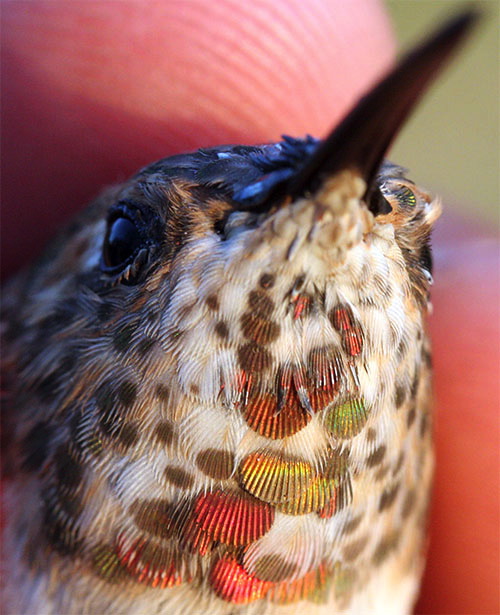
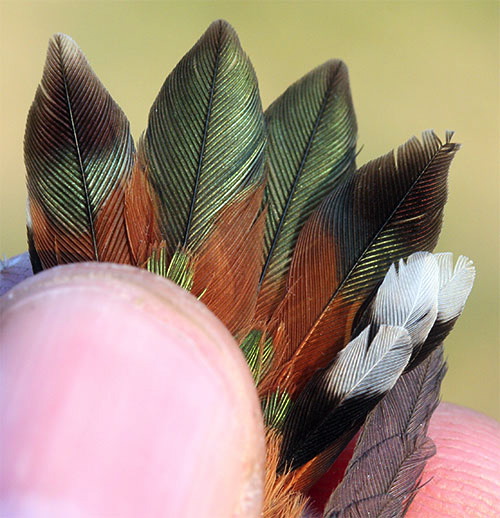
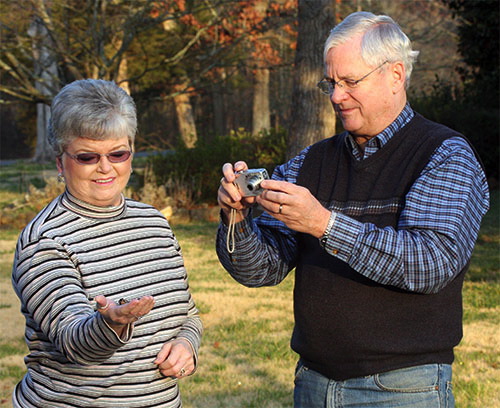
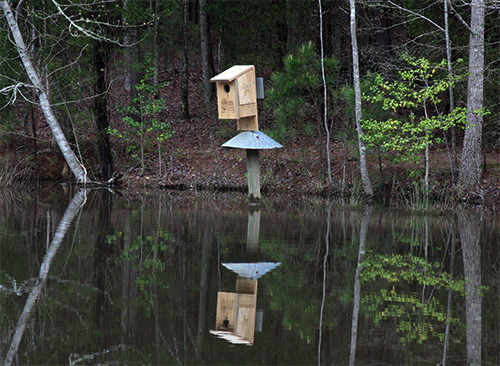
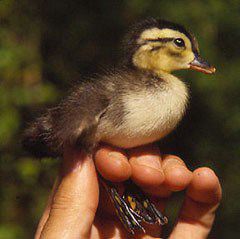 Fortunately, brother Stan Hilton had a meeting of his own in York on 11 February and volunteered to spend an hour at the Center to help take down our old boxes and hang the new. This task turned out to be a sort of slapstick affair, mostly because the less-than-seaworthy raft on which we loaded the nest boxes and all our tools was at the mercy of capricious wind that blew us all over Hilton Pond as we tried to exchange nest boxes. Despite the gusts, however, we did get four new boxes in place--complete with wood chip-lined bottoms--even if it did take almost three hours instead of the anticipated 60 minutes.
Fortunately, brother Stan Hilton had a meeting of his own in York on 11 February and volunteered to spend an hour at the Center to help take down our old boxes and hang the new. This task turned out to be a sort of slapstick affair, mostly because the less-than-seaworthy raft on which we loaded the nest boxes and all our tools was at the mercy of capricious wind that blew us all over Hilton Pond as we tried to exchange nest boxes. Despite the gusts, however, we did get four new boxes in place--complete with wood chip-lined bottoms--even if it did take almost three hours instead of the anticipated 60 minutes.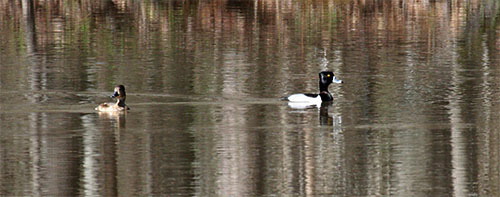


 Oct 15 to Mar 15:
Oct 15 to Mar 15: